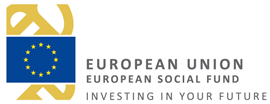Purpose and objectives of the project
The project SKUM is based on two ideas proposed by Professor Robi Kroflič.
1. The artistic experience has a great educational potential as it accesses reality in a very specific way, as a symbolically mediated experience – with the aesthetic, imaginative complementation of art codes the recipient experiences and reflects experiences of others, thus maturing ethically. At the same time, the artistic event is a specifically rich and intense way of entering the world, which not only reflects this world, but can also improve it. Therefore, art is a value in itself. Recent research ascribes educational work with artistic experience a number of positive effects: the promotion of multiple intelligences (Gardner), narrative thinking (Bruner), creativity (Robinson, Egan), innovative forms of learning (Pringle) and identity, and moral self-esteem (Nussbaum).
2. For the development of culture subjectification, imaginativeness, and multisemantics of the experience achieved through artistic languages are as important as scientific discourses.
Teaching in art and with the aid of artistic experience, as well as creation of the space where access to artistic experience is made possible, indicate the need for new didactic approaches, practices, and innovative learning environments. The purpose of the project is thus, further, to develop links between educational institutions and artists as well as with cultural institutions in the direction of expanding innovative and open learning environments supported by new didactic approaches that will strengthen the communicative potential of children/learners/adolescents. Special attention will be devoted to the development of these contents in culturally less encouraging settings and to affirmation of the fields of art less well-established in educational settings.
The basic objectives of the SKUM project are:
- to determine how and in what way preschool institutions and schools make it possible for children / adolescents to get in touch with top artistic experiences;
- to develop didactic approaches in artistic and other educational fields and new forms of linking educational work with artistic activities, including those in less well-established areas of art, with the aim of raising the level of communicative abilities of children / adolescents.



